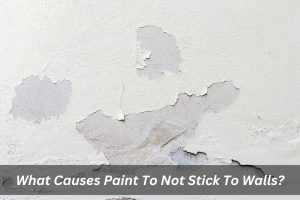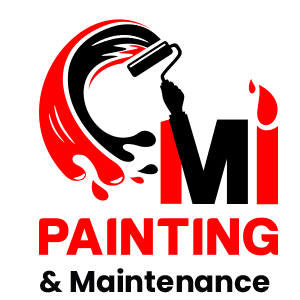What Causes Paint To Not Stick To Walls?

Are you struggling with paint not sticking to the wall? It can be frustrating when you spend time and effort applying paint, only to have it peel or flake off soon after. One of the most common reasons for paint not sticking to the surface is dirty walls. However, there are other factors that could be contributing to this problem. In this blog post, we will explore the reasons why paint might not stick to walls and provide tips for achieving a successful exterior painting project. So, let’s dive right in!
What are the reasons for the paint to not stick to the wall?
- One of the most common reasons why paint is not sticking to wall surfaces is improper preparation. Preparation involves cleaning, sanding, and priming the wall before applying any coats of paint. If the walls are not properly prepared, they may not stick correctly and start to peel or chip after a few weeks. Additionally, if you’re painting an exterior surface such as brick or stucco finish, you must ensure that it is completely dry before applying any coats.
- Masking tape can also be a factor in causing paints to not adhere correctly. If you use masking tape when painting your walls, make sure it doesn’t come into contact with wet paint. This could cause it to peel off as it dries. A good tip is to use low-adhesive tape, which can be easily removed without damaging the paint.
- In some cases, a lack of adhesion may be due to the wall surface itself. Dirt and dust on walls can prevent them from properly adhering, so it’s important to clean them before you start the project. Additionally, if you’re painting a glossy or lacquered surface, it’s best to use a coat of primer before painting with water-based paints or oil-based paints. This will help the paint stick better and last for longer.
- Finally, if you’re having trouble getting your paint to adhere correctly, check the paint itself. Paints or primers that have been exposed to extreme temperatures or are too old may not stick correctly to your walls. It’s always best to use fresh, quality paints and primers for a smooth finish that will last.
In summary, there are several reasons why paint is not sticking to wall surfaces properly. Improper preparation such as not cleaning the walls or using the wrong type of tape can lead to problems with adhesion. Additionally, some surfaces may require a coat of primer before painting, while old paints or primers can also lead to trouble getting your paint to adhere correctly. With these tips in mind, you should be able to achieve a beautiful and long-lasting finish when painting your home.
What is the significance of using high-quality paint and tools for achieving the best results?
- Using high-quality paint and tools is significant for achieving the best results for a painted surface because it ensures proper paint adhesion and a smoother, more uniform finish. Low-quality paint may not adhere well to surfaces, resulting in peeling and flaking over time.
- Additionally, using low-quality tools can cause brush or roller marks, uneven coverage, and an overall unprofessional-looking finish. When painting glossy surfaces, high-quality paint and tools are especially important because gloss tends to highlight imperfections. By investing in high-quality paint and tools, it is possible to achieve a more durable, long-lasting finish that looks more polished and professional.
What are some tips for choosing the best paint for your walls?
- When purchasing paint, make sure to read the instructions on the label carefully. By using this, you can determine the amount of paint necessary and the type of primer or preparation required for the surface.
- Choose a quality brand. When it comes to painting, many brands are available, so it’s crucial to select a brand known for its quality.Do some research and look at customer reviews before settling on one brand in particular.
- Think about the finish. Different types of finishes can create different looks and effects, so it’s important to consider which finish you want for your walls before you start painting. For example, a glossy finish creates a reflective look whereas an eggshell finish is more subtle and muted.
To sum up, be sure to follow the instructions on the paint label, use quality brands, and think about the finish before you start painting. Moreover, it’s crucial to ensure that the walls are appropriately prepared by cleaning them and applying the suitable type of primer for the surface to avoid potential issues that could stop a house’s exterior paint from peeling. With these tips in mind, you should have no problem getting your paint to stick correctly and creating a beautiful look in your home.
Are you struggling to get paint to stick to your walls? Don’t worry, Mi Painting is here to help! Our team of experts can identify the root cause of the problem and provide effective solutions for ensuring a smooth and long-lasting paint job. Contact us today to schedule a consultation and let us transform your walls into a beautiful work of art.
